The Festa delle Marie — the Feast of the Maries — was once an important event in the Venetian calendar.
Ancient Venice had many different feasts and celebrations related to major events in Venetian history. The Festa delle Marie was one such very specifically Venetian celebration of a very particular historical event, even if it is probably mostly legend and myth.
A communal wedding
In the earliest times of the Venetian state, the bishopric of Venice held a communal wedding for all the betrothed couples for the year. This was naturally a grand event, the wedding of the year.
It took place on the last day of January.
All the brides presented themselves in church, having with them their arcella — a small ark — which was a box containing their dowry.
Their grooms then arrived with their families. They all heard mass, and the bishop blessed all the couples. Afterwards, the newly wedded couples headed to their respective homes with their families in separate processions, for the wedding feasts.
Other peoples around the upper Adriatic knew this peculiar Venetian way of doing weddings quite well.
The rape of the brides of Olivolo
The Rialto islands — what we now call Venice — had become a bishopric in 774. The bishop resided on the island of Olivolo, at the church of San Pietro di Castello.
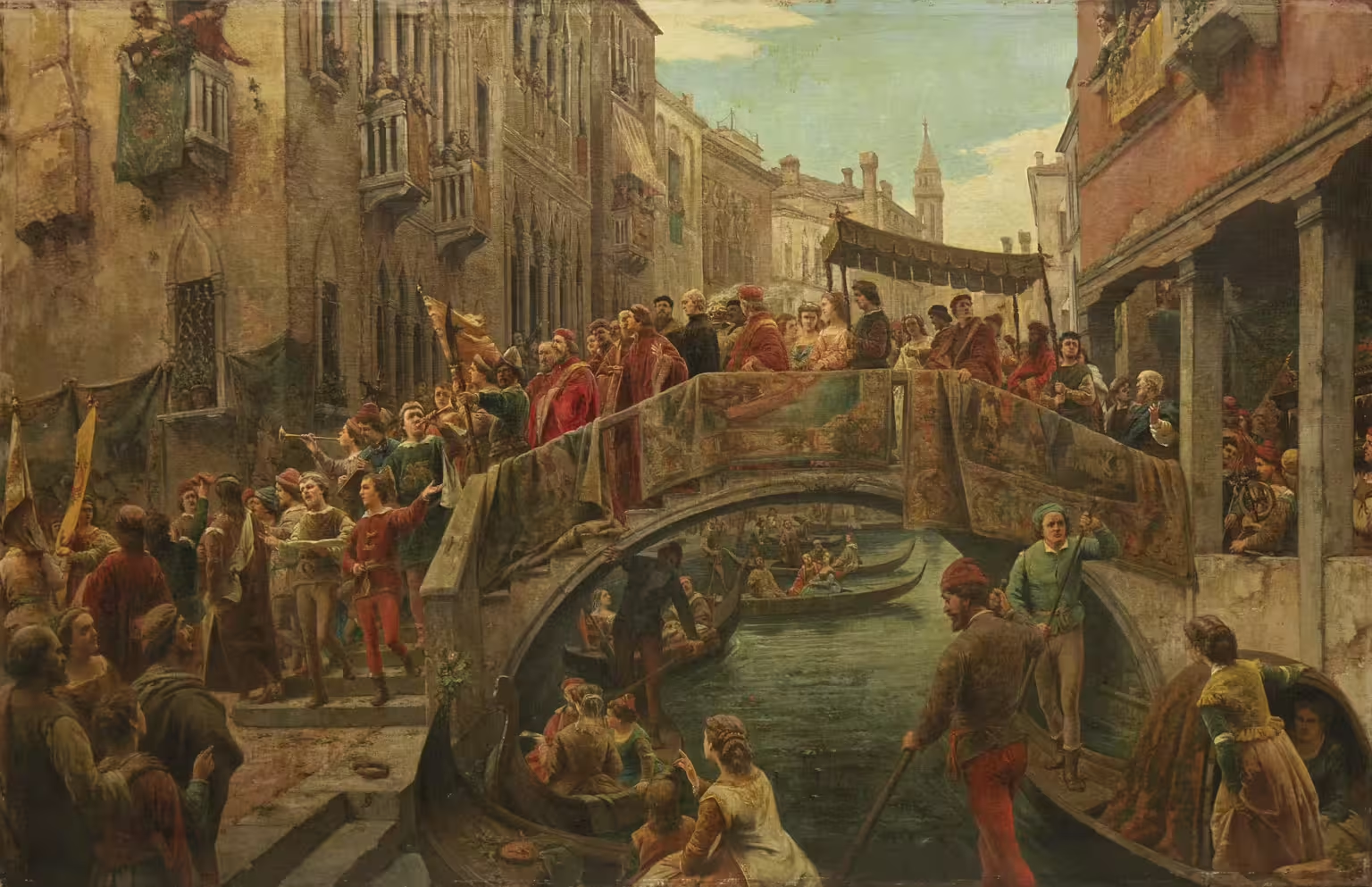
In ancient Venice, the economic centre was at Rialto, the political centre was at San Marco, and the religious centre was on the Olivolo island.
In 940 or in 944 — the sources generally don’t agree — the annual wedding was about to start in the church of San Pietro di Castello on the Olivolo island.
The brides were already in the church with their arcelle and the Doge had arrived for the ceremony, when several galleys — small, rowed warships — quickly approached the island.
Pirates from Dalmatia, or maybe from the Istrian peninsular, or even from Trieste — the sources generally don’t agree — attacked and raided the church. They rounded up the scared and confused girls, grabbed their dowries, and left in their ships.
The alarm went out through the entire city, and people grabbed whatever arms they had and headed for whatever galleys were available.
The Venetians caught up with the pirates just south of Caorle, some 50 km north of Venice. The raiders had stopped to divide the loot — girls and money — between them. The pursuers — led by the grooms — attacked the pirates ferociously. They gave no quarters. The Venetians killed all the pirates and dumped the bodies in the sea so they would get no Christian burial.
The brides and the dowries returned to Venice with their saviours, and the weddings held the day after, on February 2nd, which is the Feast of the Purification of the Blessed Virgin Mary.
It is not difficult to image the fate of the poor girls, had their grooms, fathers and brothers not come after them.
The popular feast
Even if the tradition of a grand annual communal wedding waned, the memory of the dramatic event didn’t.
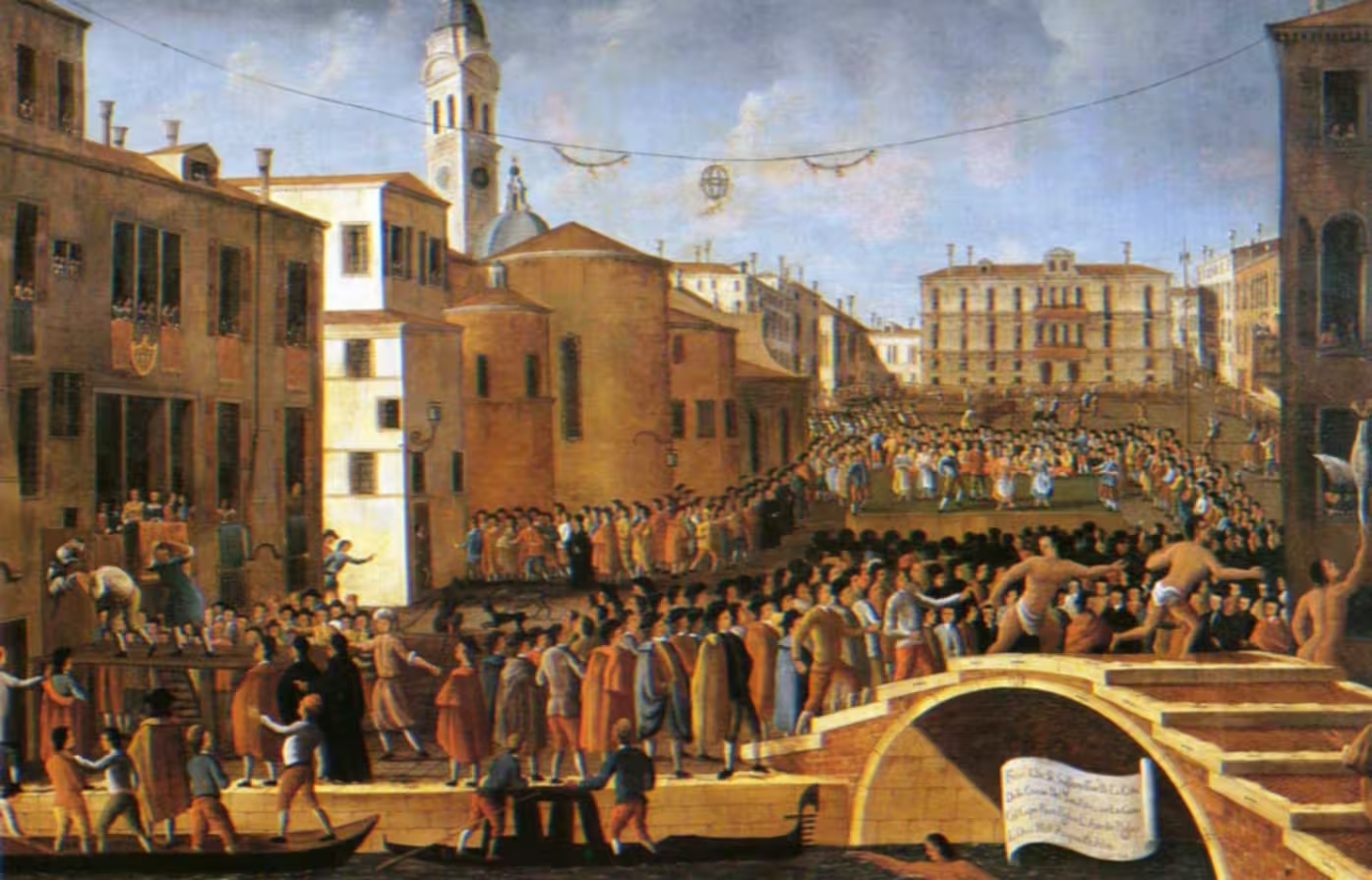
Following the rape and liberation of the brides of Olivolo, the Doge instituted the tradition that each year on February 2nd, the state offered a dowry to twelve honest but poor girls.
They quickly became known as the Twelve Maries.
The selection of the fortunate girls soon passed to the sestieri, which selected two girls each. The parishes competed about who could dress up the girls most lavishly.
It very much became a feast of the common people because the girls naturally came from the poorer end of society. The event also became a way for the Venetian aristocracy to do some very high-profile charity, by sponsoring the girls and the feasts.
The celebrations lasted eight full days.
The Doge received the selected girls, who were sumptuously dressed. After 1204 they sometimes wore jewellery from the treasury of the Basilica di San Marco, loot from the sacking of Constantinople during the Fourth Crusade.
Magnificent boat parades on the Grand Canal, solemn processions, bull fights in the public squares, rowdy feasts and dramatic regattas filled the days.
Wealthy patricians held feasts and balls for the poor girls, which were all from destitute families.
The celebrations naturally became part of the Venetian carnival, where the roles of masters and servants also tended to blur a bit.
On the last day, on February 2nd, the girls went with the Doge to hear mass at Santa Maria Formosa with the guild of the box-makers, the cassellari. The final event happened in the church of San Pietro di Castello — the site of the origin of the feast — where the girls finally received their dowries.
Too popular a feast
The feast was extremely popular with common people. This one time each year they saw some of their daughters raised to the highest levels of society, at least for a few days.
The girls were treated like princesses, and for many it must have been a dream come true.
However, conflicts appeared over expenses and over the selection of the brides. Competition between parishes sometimes deteriorated into physical violence. The vast amount of money spent of the celebrations weren’t spent on other matters, which might be important too.
Maybe, playing like that with the established social order of rich and poor became too much of a tinderbox.
Consequently, laws regulating the celebrations passed regularly, at least in 1120, in 1143 and later on other occasions.
Also, the cost of the whole affairs just went up and up.
Wooden brides and turnips
In 1271, a law reduced the number of girls to four. Later, wooden statues simply replaced the twelve girls, and the whole event became purely symbolic.
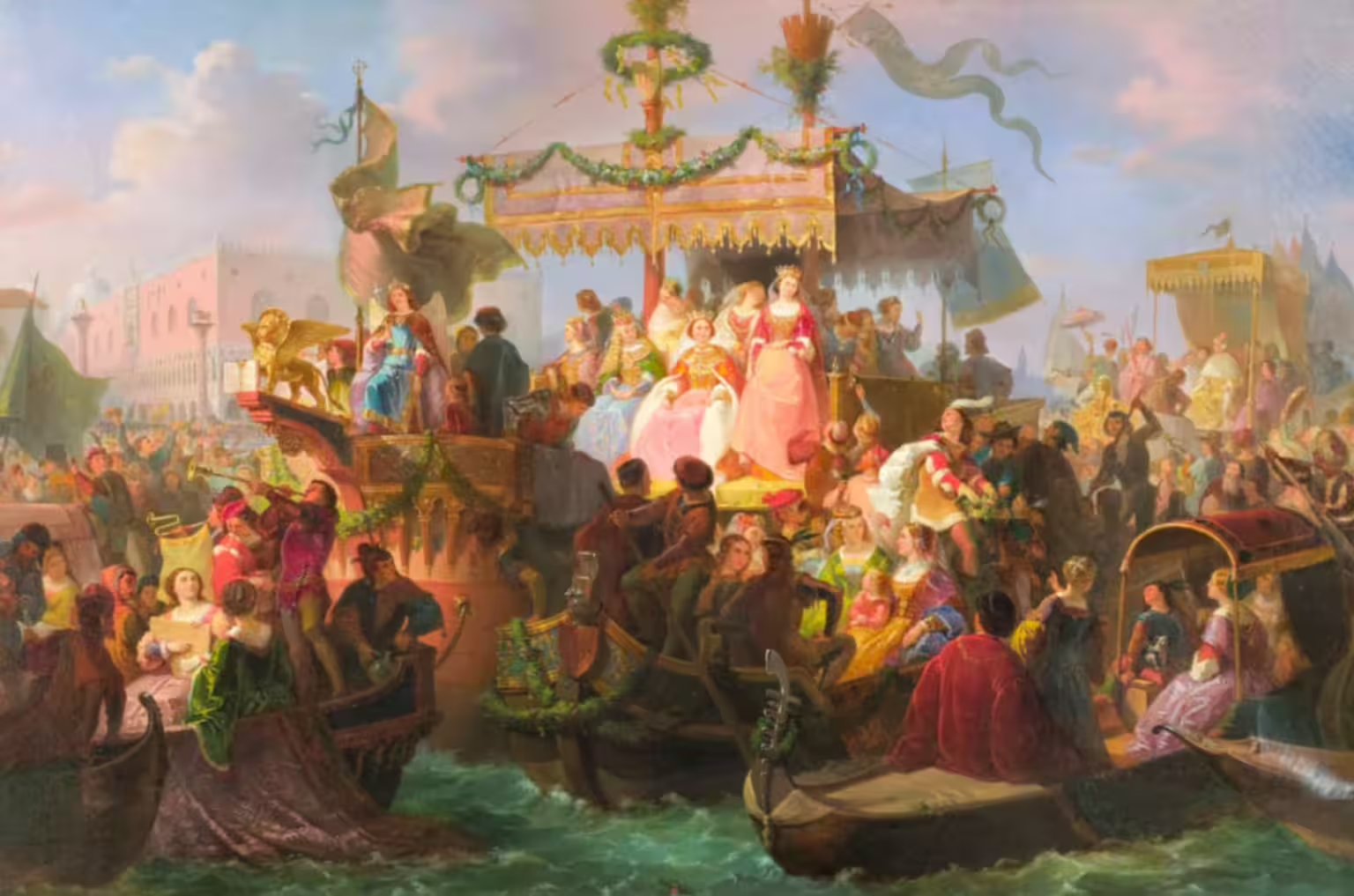
This change didn’t go down well with common people in the sestieri and parishes. They started hurling turnips at the statues, and sometimes hit dignitaries who participated in the events.
Laws quick banned the throwing of turnips during the eight days of the celebration, but it didn’t stop people from complaining, and the feast lost much of its popular appeal.
The feast had, at least for the poorer part of the population, become an empty shell. The circus remained, but the bread was gone.
The death of a feast
During the War of Chioggia in 1379–80, the Genovese managed to manoeuvre a fleet into the lagoon, and even sack and occupy Poveglia and Malamocco. The war became an existential fight for the Republic of Venice, with naval battles fought in the lagoon near San Marco.
If Venice lost the war, it would cease to exist.
The state therefore spent way more money than it had to fight the war, incurring debts left and right. Naturally, they cut all superfluous expenses unrelated to the war effort, so the Festa delle Marie didn’t happen those years.
After the war ended victoriously, the feast continued to not happen.
The only surviving part of the eight days of celebration was the annual visit of the Doge to the Cassellari — the box-makers guild at Santa Maria Formosa. It continued, as before, until 1797.
A pageant show
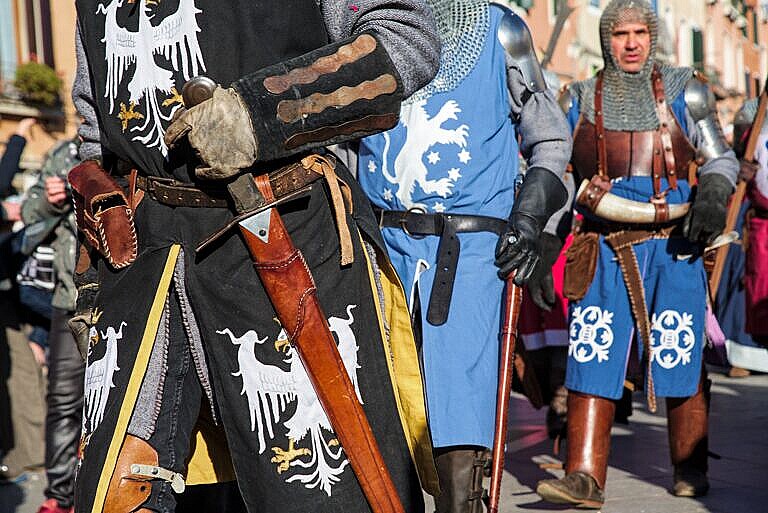
Today, an event inspired by the story of the Festa delle Marie is part of the official carnival programme in Venice.
Just like the modern Venetian carnival is but a shadow of the ancient Venetian carnival, the modern version of the Festa delle Marie is little more than a model pageant.
Twelve girls, dressed superficially medieval-like, surrounded by lots of pseudo-medieval throwing of flags, take part in a model competition. Parties, events, and numerous photo shoots, but it has little relation to the medieval events, which were quite different.
Of course, the original Festa delle Marie had absolutely nothing to do with the carnival, even it they could sometimes overlap.
Paintings
There are, as far as I know, no contemporary images of the Festa delle Maria. After all, the celebration of the Twelve Maries ended almost 650 years ago. The paintings used here are from the 1800s, and are no doubt very romanticised.
Related entries from the Curiosità Veneziane:
Related articles
Bibliography
Filiasi, Giacomo. Memorie storiche de’ Veneti primi e secondi di Jacopo Filiasi. Tomo 1[-7]. Padova, Tipografia del Seminario, 1811.
Renier Michiel, Giustina. Origine delle feste veneziane di Giustina Renier Michiel Volume primo [-sesto]. Editori degli Annali universali delle scienze e dell’industria, 1829.
Tassini, Giuseppe. Curiosità Veneziane ovvero Origini delle denominazioni stradali di Venezia. 1863.

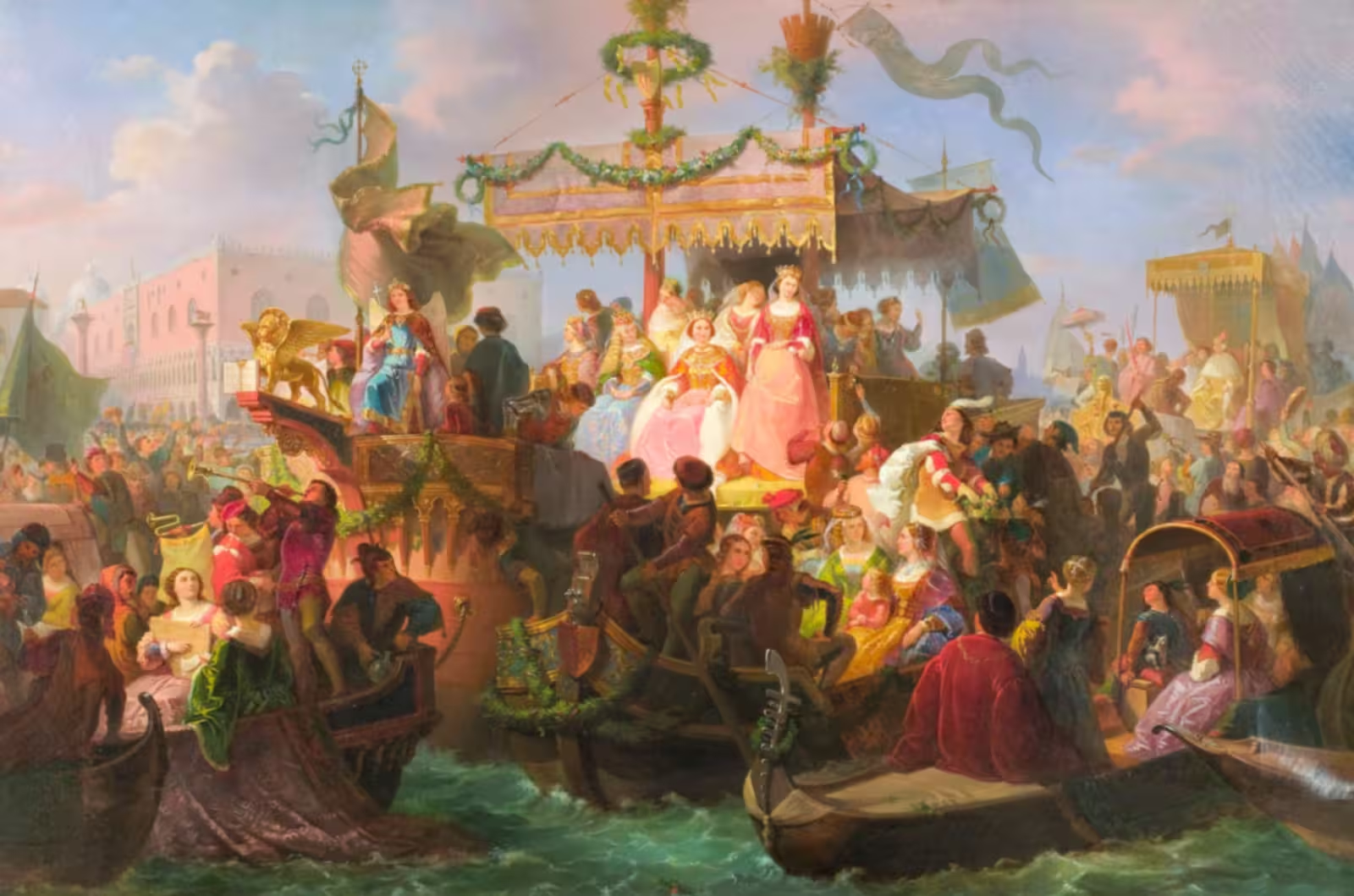
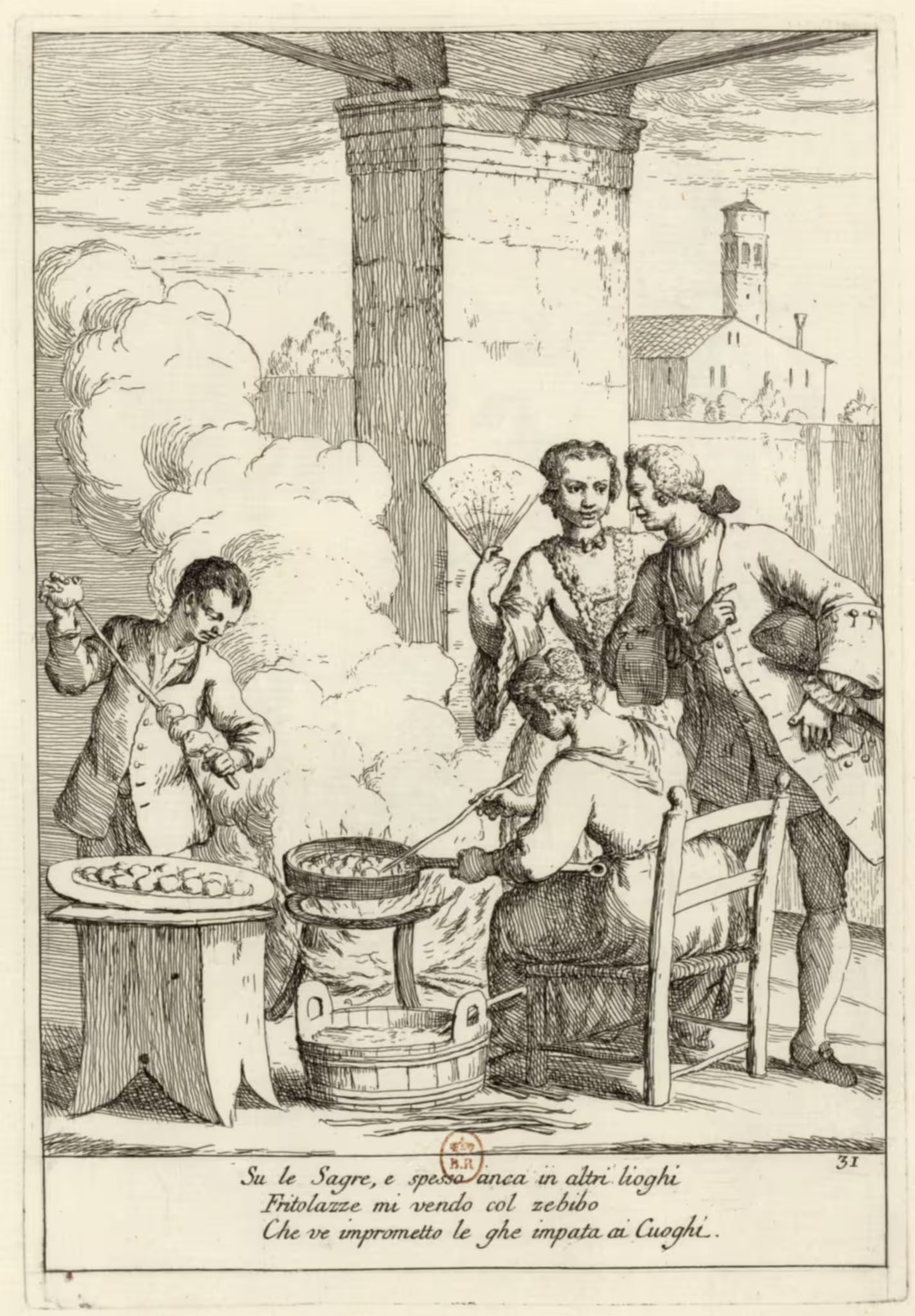

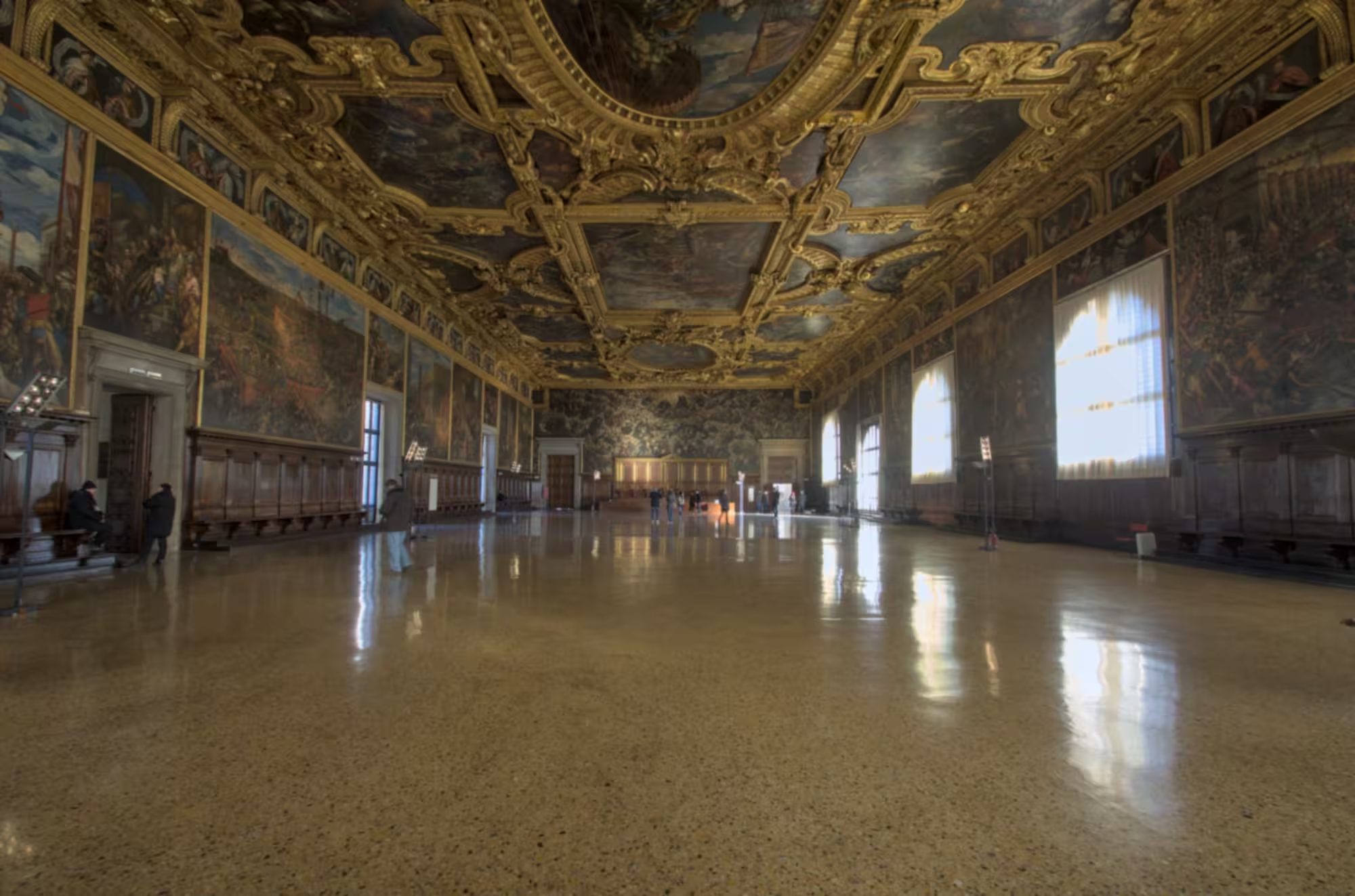
Leave a Reply